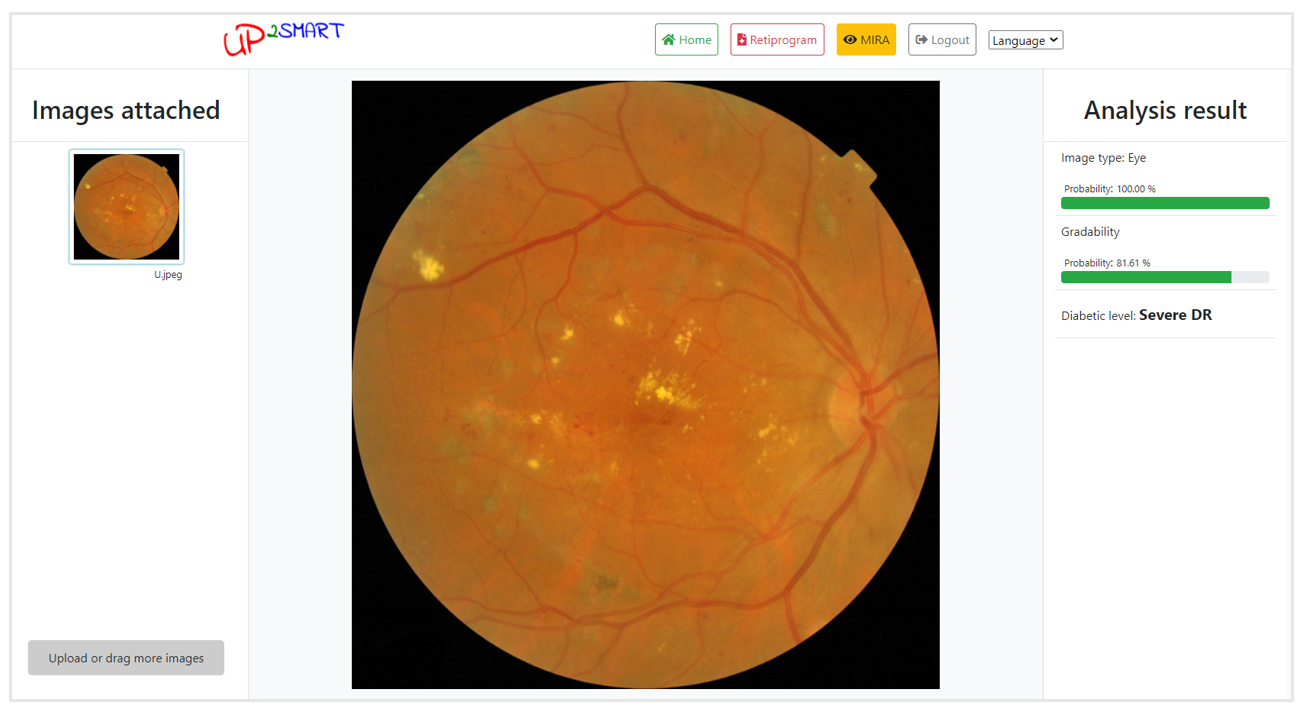The diabetic retinopathy CDSS project - URV & IISPV
Introduction - Diabetes mellitus
Diabetes mellitus (DM) is a chronic disease that affects 382 million patients from all over the world (data from 2013)
and is expected to increase to 592 million adults by 2035. In Spain, we estimate a prevalence of more than 3 million
patients with DM by 2030. In fact, DM is one of the leading causes of blindness in young adults worldwide.
The most serious ocular complication of DM is diabetic retinopathy (DR).
It is crucial to detect DR as soon as possible in order
to make a rapid diagnosis. Doctors perform an screening test using non-mydriatic fundus cameras,
but each patient can only be evaluated an average of once every 2 years.
Since 2015 we are conducting research on this topic, which received funds in 3 projects. The work is leaded by the research group ITAKA from Universitat Rovira i Virgili (experts in Computer Science and Artificial Intelligece) and
the research group on Ophtalmology from Institut Investigacio Sanitaria Pere Virgili (doctors experts in diabetic retinopathy). Tests are made with the
collaboration of Hospital Universitari Sant Joan de Reus (in Catalonia, Spain).
Objectives of the project
The main goal is to improve the screening and provide greater health coverage to risky people.
We are developing a computerized system to aid clinical diagnosis for the screening of diabetic retinopathy. The system will use
clinical history computerized data from primary care devices. This tool with assist family doctors in the detection of the
personalized risk of developing diabetic retinopathy.
There are currently two study lines, one focused
on automatic image analysis and a second specialized on the personalized detection of DR risk by means of different clinical values.
.
Awards 🏆
| Year | Title | Authors | Entity |
|---|---|---|---|
| 2009 | Academia de Ciencias Médicas de Cataluña y Baleares, for the implementation of screening through non-mydriatic cameras, by means of its integration in diabetic retinopathy diagnosis of family and community physicians. |
iTAKA group. | |
| 2014 | Second award of Sociedad Española de Oftalmología for the panel communication named: Implementation of telemedicine in diabetic retinopathy screening, with the participation of primary care. Results at 7 years. |
Raquel Verges Pujol, Sofía de la Riva Fernández. | |
| 2014 | Award to the third best oral communication in the 45th Catalan Society of Ophthalmology Congress. Title: Preliminary result of the design of a risk calculator for diabetic retinopathy screening. |
Sofía de la Riva Fernández. | |
| 2014 | HINNOVAR from NOVARTIS-ESADE prize: Ocular health in the diabetic patient. Title: Implantation of a software for the improvement of retinopathy screening. |
Pere Romero Aroca, Sofía de la Riva Fernández. | |
| 2017 | Award to the best article in the 20th Artificial Intelligence Catalan Congress. Title: Integration of different fuzzy rule-induction methods to improve the classification of patients with diabetic retinopathy. |
Emran Saleh, Aida Valls, Antonio Moreno, Pedro Romero. | |
| 2018 | Consell Social URV award for the Social Impact of Research - EX POST modality. |
iTAKA group. | |
| 2021 | Award to the best doctoral thesis “Marc Esteva Vivanco”. Given by the Catalan Association of Artificial Intelligence (ACIA). |
Emran Saleh. | |
| 2021 | Award to the best poster of the 23rd Artificial Intelligence Catalan Congress. Iterative update of a Random Forest classifier for Diabetic Retinopathy. |
Jordi Pascual Fontanilles, Aïda Valls, Antonio Moreno, Pedro Romero Aroca. |
Theses
Past
Members
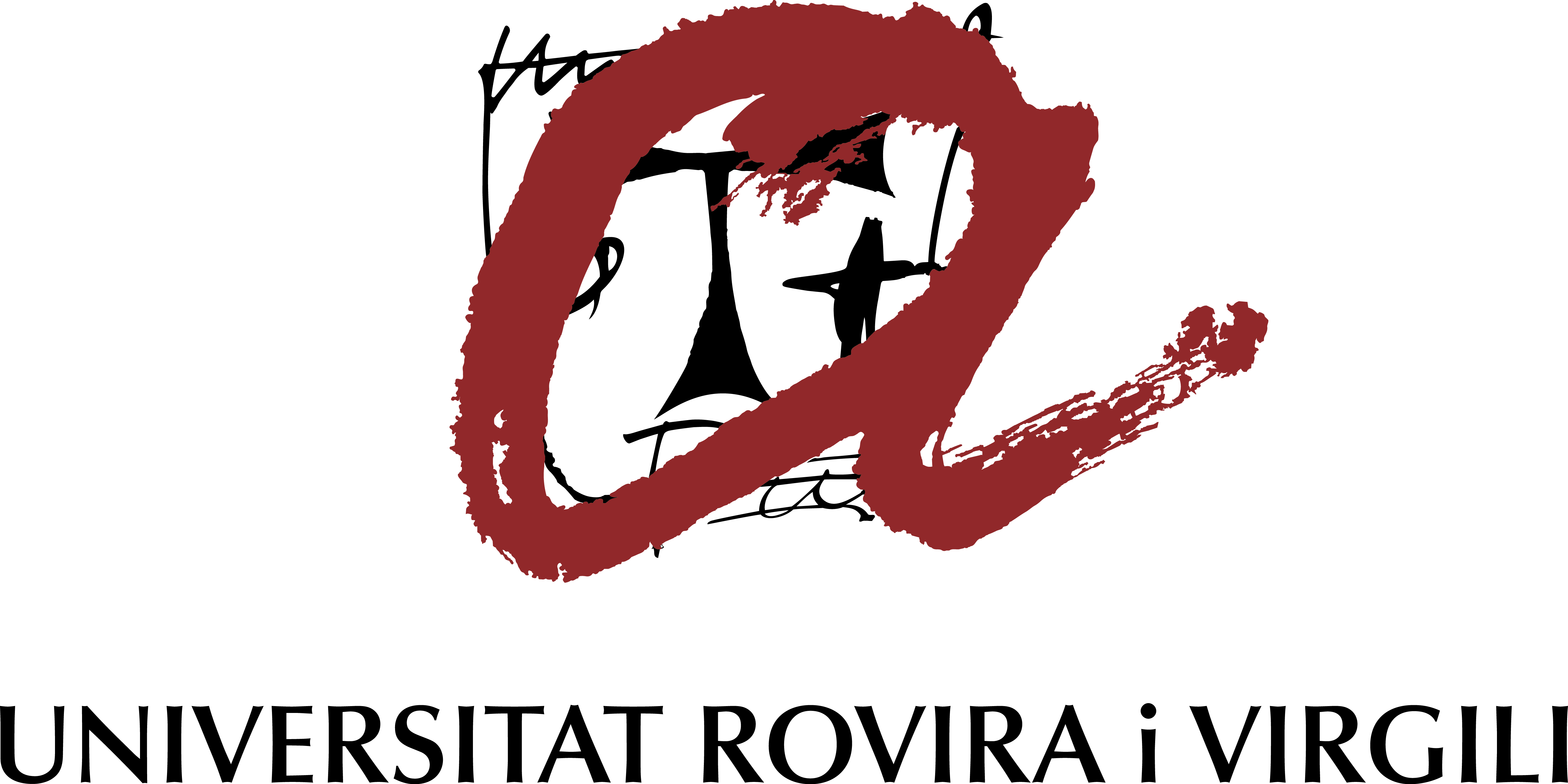

| Aïda Valls Mateu - PI | Jordi Pascual Fontanilles | José Escorcia Gutiérrez | Antonio Moreno Ribas | Mohammed Yousef Salem Ali | Najlaa Maarouf Wahib Al-Ziyadi |


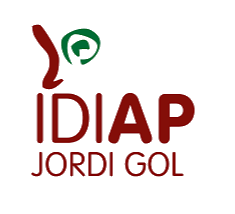
| Pere Romero Aroca - PI | Marc Baget Bernaldiz | Raul Navarro Gil | Raquel Verges Pujol | Esther Santos Blanco | Josep Basora Gallisa | Ramón Sagarra Alamo | Xavier Mundet | Joan Barrot | Josep Franch |
Funding
Our funds come from two different sources: Fondo de Investigación en Salud Instituto de Salud Carlos III and Fondos Feder.
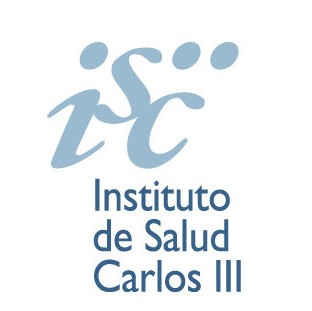
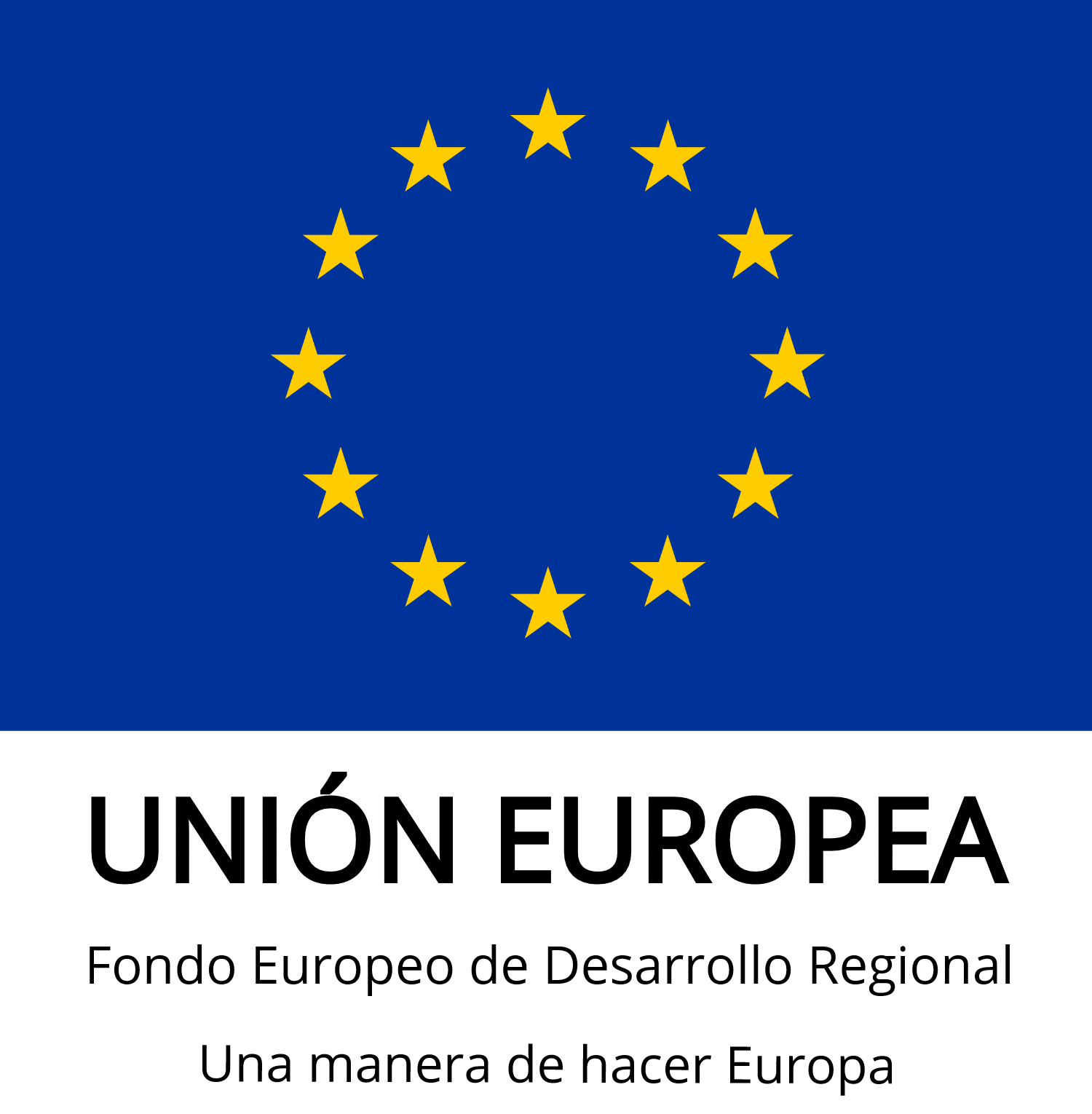
Projects' IDs
-
PI15: Expansion and implementation of a clinical support application for diabetic retinopathy screening, including automatic image reading.
-
PI18: Application in a real population and evaluation of the diabetic retinopathy screening aid system, including an automatic image reading system.
-
PI21: Improvement of the diagnosis aid system to predict the degree of diabetic retinopathy and, in case of mild retinopathy, predict its evolution to more advanced stages. Acronym: ADRIANA (Advanced Diabetic Retinopathy Intelligent Analysis and Assessment)
Software
As result of the projects, two software applications have been registered and licensed. They are exploited by Company Up2Smart.
RETIPROGRAM
In the period 2015-2018, thanks to the support provided by the PI15 project, we started the development of a clinical support system for the screening of diabetic retinopathy, from a database of 2,323 diabetic patients. This system has allowed us to develop a new screening model, taking into account the risk factors of each patient. Since then, in the following projects, we have improved the classification accuracy and we have validated the program using a larger set of data. The software is called RETIPROGRAM and it is used in a pilot test at Hospital Sant Joan de Reus. The system is able to indicate the risk level of developing DR using 9 risk factors. Then, the optimal screening time between 6 months and 3 years is established. With this information, the doctor can decide the best action for each individual.
The computer system is based on Artificial Intelligence techniques. Using supervised automatic learning methods and a sample of thousands of patients, a classifier has been constructed. The classification software uses a fuzzy random forest model to analyze the values of a set of risk factors and indicates numerically the patient's risk of developing RD.
The current work consists on implementing a method that continously updates and improves the classification model, using new examples. In addition, we are developing an automatic explanation procedure, which will produce a text that helps the doctor to interpret the result given by RETIPROGRAM for a particular person.
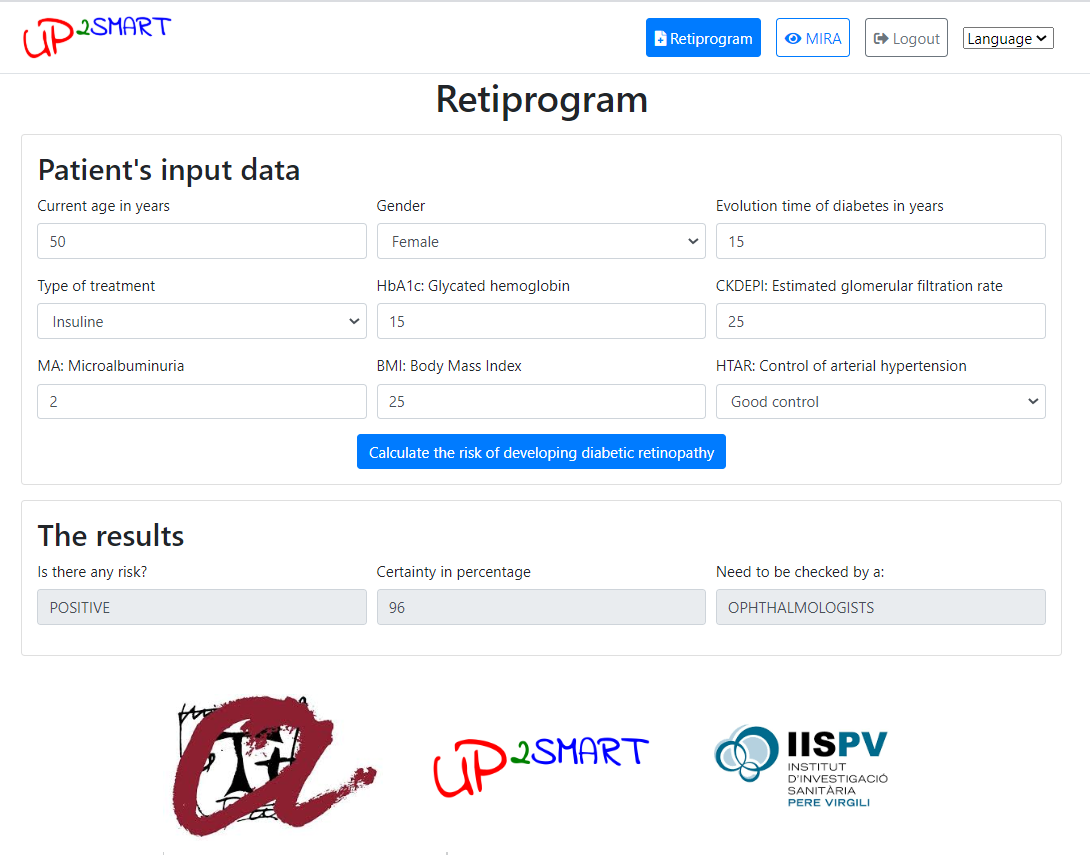
MIRA
In project PI18 we proceeded to implement the system in the basic areas of our health sector, validating it in a large population and improving its current accuracy level. We will also include the automatic acquisition of retinal images to convert the screening aid system into a diagnostic aid system, which also allows predicting the evolution of retinopathy, if any, to more severe phases.
Two different methods were studied for automatic image analysis:
-
Methods based on the usual computer vision techniques, following the classical procedure of feature extraction and classification. Images of the papilla and retinal vessels have been extracted, selecting the macular area. The next step has been to detect the presence of red spots, both microaneurysms and hemorrhages.
-
Methods based on Convolutional Neural Networks. We trained a model to classify an image into the different levels of diabetic retinopathy, according to the severity of the lesions detected in the algorithm set up. The neural networks are trained with image data from public databases and have been validated with a Catalan hospital's own images.
MIRA system for a negative DR patient:
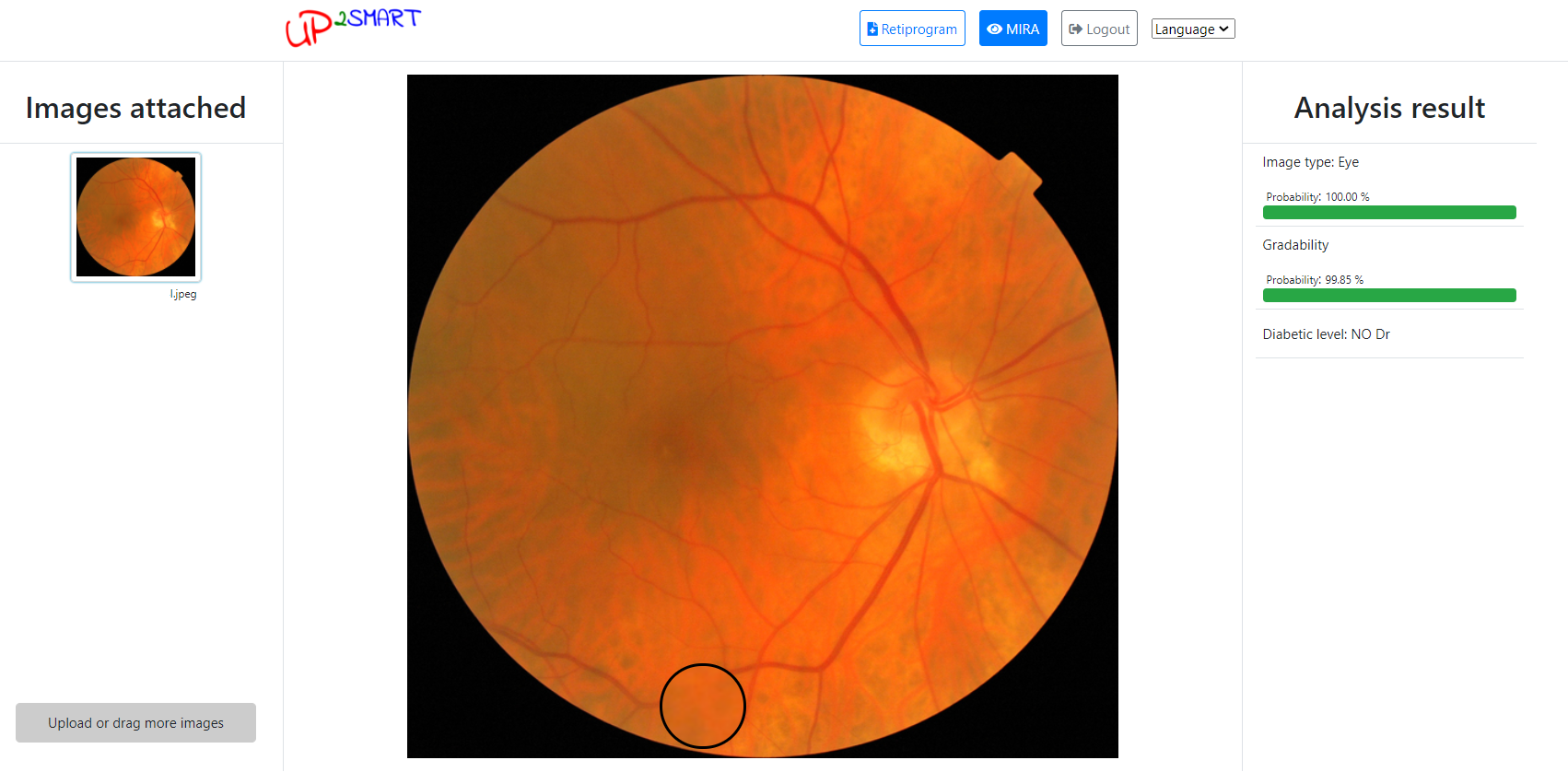
MIRA system for a positive DR patient:
